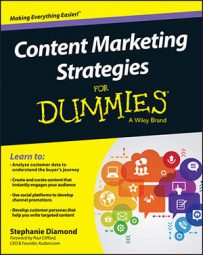Content marketers proceeded to send steady streams of content, only to find that much of it was greeted without enthusiasm. That’s when managers decided that big data really did matter. Now they know that they need to use data to tell them how to beat the competition and get customers’ attention. There’s no time to waste sending content that doesn’t hit its mark.
Big data improves your content marketing
So, as a content marketer, you want to know how using big data will improve your content marketing efforts. You should be happy to know that it enhances your effort in several ways. It helps you:- Be more effective against your competition. By analyzing a variety of data, you can understand your competitors in ways that you couldn’t before. This understanding helps you create content with quality that surpasses that of your competition.
- Find new ways to compete. New data may allow you to find and explore new business models and niches. This exploration helps you create content that expands your customer base and creates new revenue streams.
- Zero in on your targeted audience. With more data telling you about channels, you know how and where to communicate with your customers. You can create the content that customers value and distribute it to the places they will look.
- Interact with your community. By knowing where your customers congregate, you can create a community of like-minded people who will help guide your content marketing efforts by providing
- Analyze your wins and losses. By quickly showing you what tactics are succeeding and failing, you can make revisions to content that improve website traffic and customer satisfaction.
Using real-time content
Obviously, the desire by content marketers to provide customers with exciting real-time content is strong. It’s a way to capture attention and customers have come to expect it. The key to using this content effectively is to keep your customers at the center of all your efforts.Don’t get sidetracked by providing real-time content that doesn’t speak directly to your customers.
Customers have grown used to having their smartphones and other devices with them so that they can communicate as needed. Companies should expand their content messages as much as possible to take advantage of real-time content.Here are some other ideas that can expand your real-time reach:
- Use Facebook Live. Facebook Live makes it very easy to set up live streaming. You can interact with your customers and learn exactly what they care about.
- Stream YouTube Live. You can set reminders to catch YouTube sports, music, and games.
- Create Instastories. Instastories have become very popular and are featured at the top of your Instagram feed. They are photos or videos that tell a quick story or show users something you’re doing. They disappear from the site after 24 hours.
- Conduct Twitter chats. Don’t only rely on tweets. Twitter chats are available in real time to all interested parties. You may be able to interest new users in your company by appealing to them from this channel. In addition, the transcript (content) will be available to them after the live chat.
- Host Google Hangouts: Developing a webinar (an online seminar) for Google Hangouts is a quick and easy way to target customers on Google, the web’s most popular search platform. It also lets you create content that can be viewed later.
- Newsjack: Newsjacking is defined as the art of using news stories and celebrities to create timely content for your customers. You’ve probably seen content with titles like “What [insert rock star name] can teach you about [insert concept].” The trick with this content is to actually make the information valuable, as opposed to just using a celebrity name to get attention.
Some content marketers argue that getting attention is what newsjacking is about, but your audience will tire of it if you keep providing content attached to famous names and events that’s just not useful.
How the Internet of Things fits into content marketing
Are you curious about the Internet of Things (IoT) and how it relates to data? You’re going to hear more about the IoT as time goes on. The IoT is a network of items that communicate their data to people and things without the need for human interaction. Included are such things as sensors in machines, appliances, and electronics.Reviewing IoT market size
Technology writer Walt Mossberg of Recode describes the IoT as “a whole constellation of inanimate objects [that] is being designed with built-in wireless connectivity so that they can be monitored, controlled, and linked over the Internet via a mobile app.” Mossberg says that users can install these objects in the home “without changing wiring or hiring a professional.”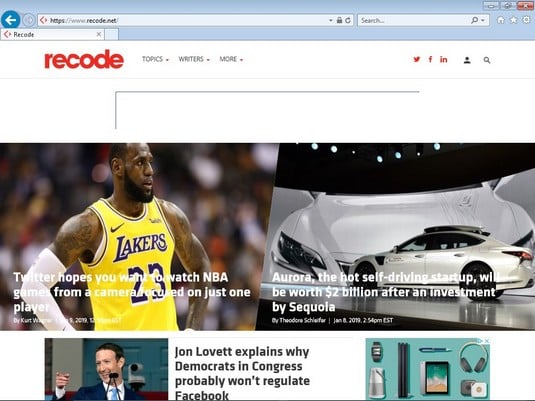 Recode.
Recode.What are examples of how the IoT benefits both business and consumers?
- Business: In the enterprise space, your factory floor can have machines that tell your managers when they need maintenance or need to have parts replaced.
- Consumer: As a consumer, you can be alerted when someone comes to your front door or when your appliance is out of warranty.
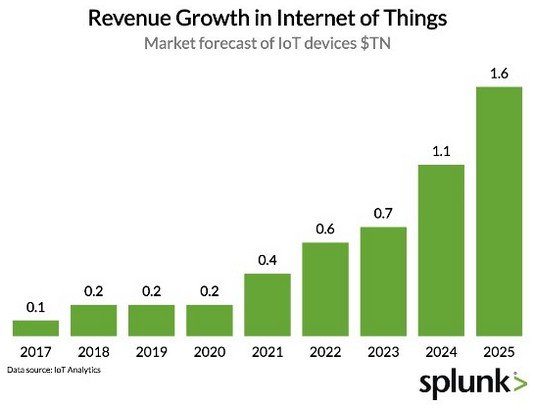 IoT sales projections from Priceonomics.
IoT sales projections from Priceonomics.In addition, Intel projects that in 2020, the IoT will have two billion objects (see Intel’s infographic).
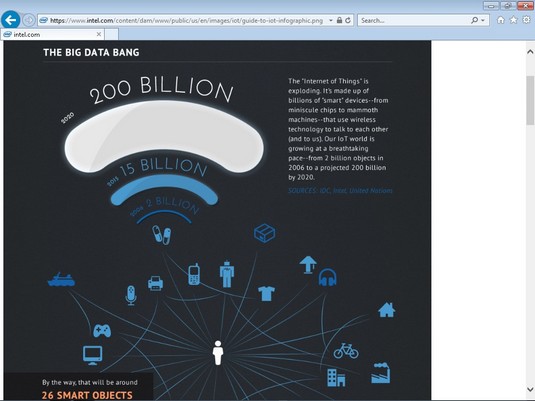 The Intel infographic on IoT.
The Intel infographic on IoT.Clearly, you should not ignore this trend. What you need to know is how it will impact your customers.
The impact of IoT on content marketing
To help you understand how the IoT will affect your customer’s experience, here’s an example to consider. Your customer can receive your content in a myriad of places. She is no longer confined to gadgets such as her laptop and iPhone.For example, her refrigerator can alert her to problems with food temperature. This capability affects your touchpoints (points of contact between the customer and the company) and the customer journey, and requires you to develop new messages for customer consumption based on the device customers are coming from.
Following are some specific ways in which the IoT impacts content marketing and the customer experience. In March of 2015, Altimeter produced an excellent report called “Customer Experience in the Internet of Things: Five Ways Brands Can Use Sensors to Build Better Customer Relationships” by Jessica Groopman. This report discusses a variety of ways the customer can be affected by the IoT, including providing support and rewards. Four in particular have a direct impact on content marketing.
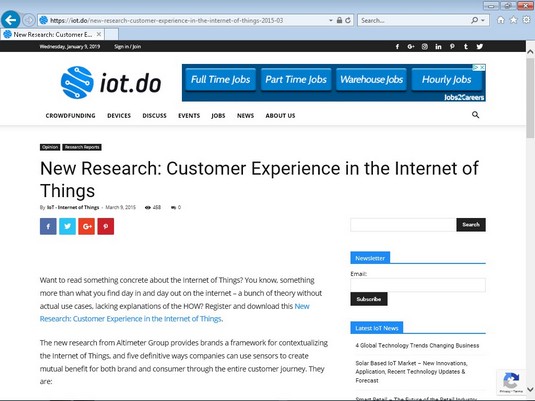 Altimeter’s Customer Experience Report.
Altimeter’s Customer Experience Report.
Following are ways to provide consumers with information through content marketing to affect their decision-making:
- Environment and proximity data: You can send consumers your product messages based on factors like location, weather, and product interaction. Retailers, for example, can send targeted messages about what to wear or eat to beat the heat.
- Location-based information: Another way to use location data is to determine the customer’s proximity to the product itself. Companies can guide shoppers to find nearby products and to choose the specific product when they are in the retail store itself.
- Monitoring data: The product can monitor and send a variety of data from the device itself. An example is a health device that reports current heart rate to the user.
- Breaking news: Companies can alert users to important announcements and emergencies right from their devices in real time. Such alerts provide a public service as well as benefits to the user.

